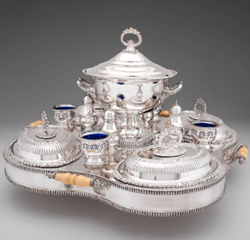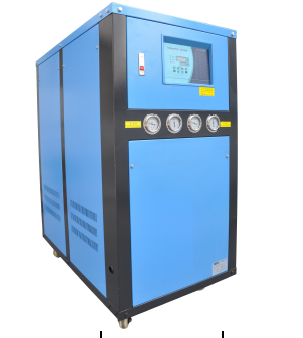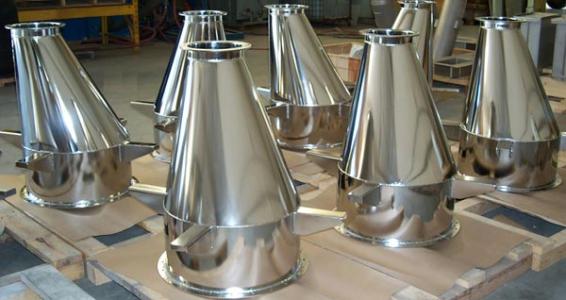At present, the production of zinc alloy die casting low cost, the production process easier, the role of zinc products increased, zinc alloy die castings for the production of jewelry, zippers, handicrafts, and zinc alloy die castings cannot withstand the acidic bath corrosion, and therefore, it is common to use copper cyanide for zinc alloy die casting pre-plating. This is because the copper under layer protects the zinc alloy die castings from the corrosion of the acid bath and prevents the replacement plating, and makes the nickel plating layer on the copper has the good union, enhances the zinc alloy die casting coating corrosion resistance performance. However, cyanide copper plating there is a greater disadvantage of toxicity. At the same time must be considered wastewater and waste gas treatment.
Cyanide copper plating is the most widely used, the oldest method of copper plating. The solution was composed of copper cyanide complex
The following four characteristics:
A. The electroplating process has a certain degree of oil to the oil and the ability to activate.
B. Cyanide complex ability, the catholic polarization of the bath is very high, so have excellent plating capacity and coverage, in a variety of metal substrates coated with a good combination of copper layer.
C. A variety of impurities on the bath less impact, process specification requirements wide, easy to control, basically able to adapt to a variety of complex parts plating requirements.
D. Cyanide copper plating obtained by the surface bright, fine crystal, low porosity. Easy to polish, with good conductivity and weldability.
Cyanide copper plating in the entire electroplating process is a more important part, therefore, an electroplating technician on-site control of the level of product determines the plating quality.
Cyanide copper plating bath composition
1. The main salt: copper cyanide(CuCN), is the supply of copper ion plating solution(Cu-) of the source, the preparation of solution to the form of cuprous cyanide, and in the actual production of copper metal content is usually controlled (cyanide Cuprous copper containing 70.9% copper), because the copper content and free cyanide have a certain proportion. I think it is appropriate to control the cuprous cyanide in the 35-60g/L is more appropriate, high copper content, the copper speed, high production efficiency, but the copper cyanide is too high, the problem has increased significantly, the probability of blistering Increased a lot.. When the cuprous cyanide is too low, the cathodic polarization value increases, the current efficiency decreases significantly, the allowable operating current density is low, the plating speed is slow and the efficiency is low. In general, the content of copper cyanide, and different parts of the metal matrix, the formulation and operating conditions are also slightly changed, such as; barrel plating ordinary iron base backing of the general 30-50g/l, but Zinc alloy die casting is different, due to zinc alloy die-casting primer copper layer to thicken, the copper layer thickness is generally not less than 5μm, so the electroplated zinc alloy die casting solution cyanide cyanide content to reach 50-60g/L. It should be noted that the usual need for additional copper cyanide, can not be dissolved with a bath, be sure to use pure water to dissolve, and must be fully reacted with sodium cyanide before they can join the plating tank.
Often asked the post mechanic; why the analysis of good results by adding copper cyanide, added after a period of time, the quality of the coating did not make worse than before? In fact, this problem is very simple, this is the reaction did not complete the material, adding the obvious performance of the plating tank. Especially with the bath to dissolve cuprous, and more difficult to timely and complete response. If conditions permit, the best way is; with pure water soluble, dissolved today, tomorrow and then joined the plating tank.
2. Cyanide and copper cyanide to maintain a certain percentage, because the complex of 1 g of cyanide cuprous cyanide cyanide, cyanide, cyanide, sodium cyanide; Sodium cyanide 1.1-1.5 grams, free sodium cyanide generally control in the 9.5-20g/L (sodium cyanide minus the total amount of copper cyanide complex, the remaining sodium cyanide for the amount of free sodium cyanide) . Free sodium cyanide is too low, low-current density area will play a cloud, but free sodium cyanide higher than 20g/l cathode current efficiency is reduced, while the cathode will have a lot of gas, so the best free cyanide with copper . Many experienced, experienced front-line operators can rely on experience to determine the cyanide content, which is mainly noted in the quality of the coating and the anode to determine the dissolution of the ground. Such as; copper anode shiny, and the cathode there are a lot of hydrogen precipitation, then the free cyanide has been excessive. On the contrary, the free cyanide is too low anode dissolution is not normal, severe black, passivation, and even observed near the anode liquid surface will be light blue. Resulting in parts of the coating dark or the formation of sponge-like pattern, this time, the bath will be turbid, serious will produce copper (Cu2+).
3. Sodium carbonate can not only improve the conductivity of the bath, pH 10.5-11.5 when sodium carbonate has a certain buffer capacity to stabilize the bath PH, the anode polarization is slightly lower, and promote the dissolution of the anode. But the cyanide system of the bath with the use of time, the carbonate will gradually accumulate increased. In other words, with the bath temperature rise, cyanide decomposition reaction will increase, the solution carbonate content also increased.
Caused by the following two reactions:
2NaCN+2H2O+2NaOH+O2→2Na2CO2+2NH3
2NaCN+H2O+CO2→Na2CO3+2HCN
Carbonate below 70g/L, the bath is working, the coating is normal, but Na2CO3 content of more than 90g/L or K2CO3 more than 115g/l, it can make the solution resistance increases, the cathode current efficiency, work The current density range reduced, the anode passivation, the porosity of the coating increased, resulting in a serious loose coating.
4. Potassium sodium tartrate: mainly activated anodes, when the solution is not free cyanide, the anode is easy passivation, then the anode surface of the formation of divalent copper ions or insoluble copper hydroxide, tartrate can promote the normal dissolution of the anode . Add the amount; 25-30g/L.
Temperature:
Generally 40-55℃. When the temperature is too high, the workshop environment is poor, waste of energy, accelerate the decomposition of sodium cyanide. Temperature is too low, then the speed is slow, low efficiency, poor brightness, zinc alloy plating requires fast plating, compact coating, the important point is that the anode must be dissolved normally, so the anode area is large enough. Increase the anode area, the most effective way is to cut into small pieces of copper plate into the titanium blue, copper is dissolved by anodic supplement, usually only need to add maintenance of sodium cyanide. To do this is to ensure that the coating is an important factor in the dense. Usually copper by copper cyanide can not make the coating dense, and the high cost of plating. Practice has proved that the anode dissolved in the normal bath carbonate is not exceeded. Copper anode dissolved normally, is slightly dark red, wipe the surface of the black film bright copper, such as free cyanide is too high, the anode is very bright. Free cyanide is too low, drug blue, anode green. Carbonate is too high, copper plate gray. Lead impurities, the anode black, the coating is prone to spots.





Thanks, great article.